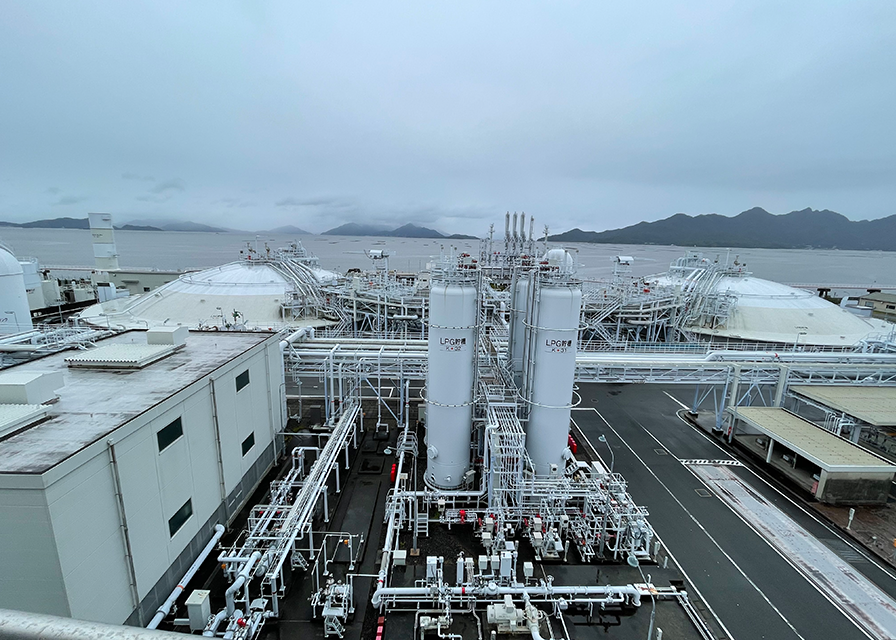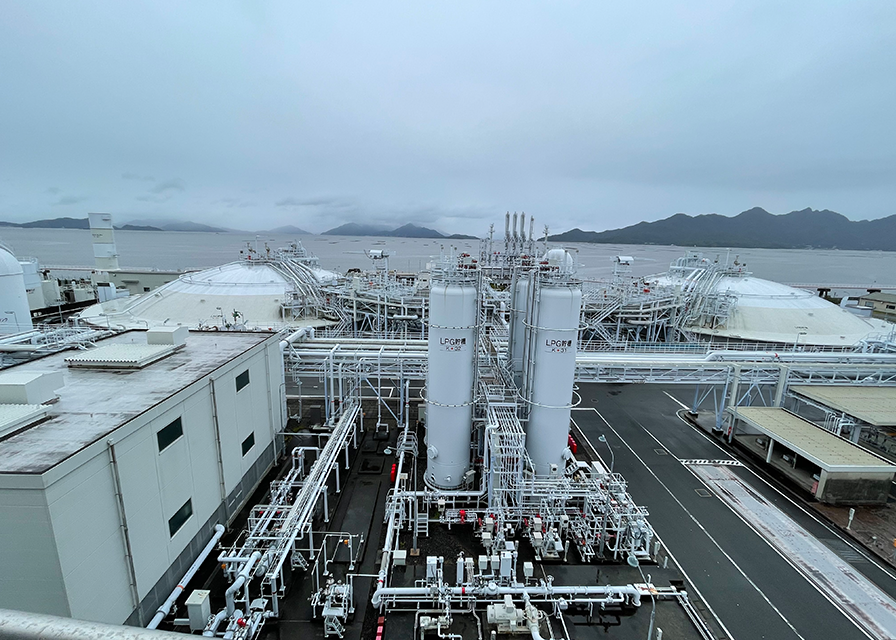LPG tanks to be installed to keep options open for lean LNG
Working to diversify LNG procurement sources
Considering whether to renew Russia’s Sakhalin 2 LNG contract
Japan’s Hiroshima Gas is set to start building two LPG tanks from December at its Hatsukaichi LNG terminal as part of efforts to enhance its capability to receive various types of LNG and be prepared for possible imports of lean LNG, ahead of its LNG purchase contractual expiry by around 2030, according to company officials.
Not registered?
Receive daily email alerts, subscriber notes & personalize your experience.
The two LPG tanks, with a storage capacity of 990 mt each, are scheduled for completion in September 2026. The company currently has two 60 mt LPG tanks and two 75 mt LPG tanks at the Hatsukaichi LNG terminal.
The move by Hiroshima Gas comes as it aims to be prepared for greater availability of lean-gas-based LNG to keep its options open, with the approach of its long-term LNG contract expiries, the officials said.
“While it is not necessarily about purchasing from the US, this is part of our advanced efforts ahead of renewal, or expiry of LNG purchase contracts gradually by around 2030,” Kazunori Tamura, senior executive officer and member of the board, told reporters during a visit to the Hatsukaichi LNG terminal Oct. 8.
“This is also part of our efforts to be able to receive LNG with low calorific value for emergency as well as for spot LNG, which could also be lean, or low-calorie LNG,” he said during a press briefing at the Hatsukaichi LNG terminal, coinciding with the general assembly of the International Group of Liquefied Natural Gas Importers, or GIIGNL in Hiroshima.
Hiroshima Gas’ Hatsukaichi LNG terminal Oct. 8, 2024. Source: Takeo Kumagai, S&P Global Commodity Insights
LPG use
LPG is typically used to adjust calorific value in city gas in Japan, and the use of lean LNG requires a larger volume of LPG for adjusting calorific values.
The Hatsukaichi LNG terminal, which is currently using about 15,000 mt/year of LPG, expects to receive LPG on coastal carriers that can load 600-700 mt after the completion of the LPG tanks, Tamura said.
Hiroshima Gas currently transports LPG via tank trucks from other terminals to the Hatsukaichi LNG terminal.
Japan’s use of LPG for city gas blending has been rising in recent years, mirroring increasing imports of lean LNG from the US. The country’s LPG demand for the city gas use is forecast to rise by an average of 2.4% a year over the period to fiscal year 2028-29 (April-March), for a total increase of 12.8% to 1.722 million mt versus 1.526 million mt in FY 2023-24, due mainly to an expected increase in demand for blending LPG to add calorific value into city gas because of an expected increase in lean LNG imports from the US, according to the Ministry of Economy, Trade and Industry.
Contractual expiry
Hiroshima Gas is currently contracted to procure a total of about 400,000 mt/year of LNG, with Russia’s Sakhalin 2 accounting for a maximum 210,000 mt/year, Osaka Gas supplying 50,000-130,000 mt/year and Malaysia LNG totaling about 100,000 mt/year.
With contractual expiry underway for Sakhalin 2 in March 2028, Osaka Gas in March 2031 and Malaysia LNG in March 2031, Hiroshima Gas is considering various options.
Nevertheless, Hiroshima Gas places mid-to-long term LNG supply contracts as the foundation of its LNG procurement portfolio, Satoshi Sano, general manager of energy resources and international business department, told S&P Global Commodity Insights.
“While we recognize that spreading out LNG procurement sources to the extent possible based on economics will be important for hedging risk, we are working on diversification of LNG procurement sources,” Sano said.
Hiroshima Gas also has backup plans to procure LNG from other companies as well as from its other contracts to ensure its stable procurement even in the event of disruption in LNG procurements, Sano said.
Asked whether Hiroshima Gas plans to renew the Sakhalin 2 LNG contract, Sano said: “We are in the midst of consideration about whether to renew the contract.”
Unique terminal
The Hatsukaichi LNG terminal started operations in 1995 as Hiroshima Gas’ only terminal that can accept ocean liners. It was then based on a 37,000 square meter site and equipped with facilities, including two 85,000 kl LNG storage tanks in a compact layout.
The terminal has adopted a pit-in type LNG storage tanks, which is constructed in a underground concrete pit at a depth of about 39 meters and a diameter of around 56 meters, each equipped with a double metal shell as the only type of storage tanks in Japan.
The pit-in type LNG storage tanks was adopted so as to minimize the impact on the immediate environment, as the Hatsukaichi LNG terminal is located across from Miyajima Island, which houses the World Heritage Itsukushima Shrine.
The Hatsukaichi LNG terminal, which had its land area extended to 50,000 sq meters in 2021, has been able to accept standard-sized LNG carriers with a loading capacity of up to 177,000 kl since January 2016.
Due to restrictions with its LNG storage capacity, Hiroshima Gas receives about half a full LNG cargo from standard-sized carrier after having discharged the remaining half at another terminal. Hiroshima Gas has a joint transport contract with Tokyo Gas until FY 2027-28.
Hiroshima Gas received about 300,000 mt of LNG at the Hatsukaichi LNG terminal in FY 2023-24.


